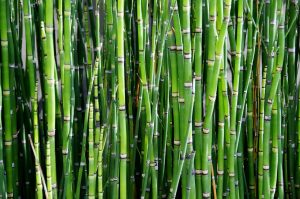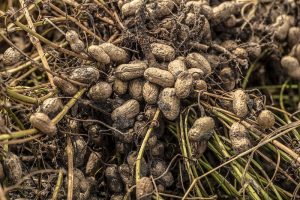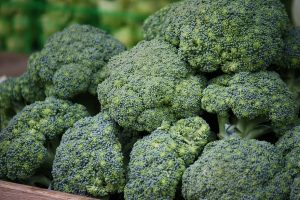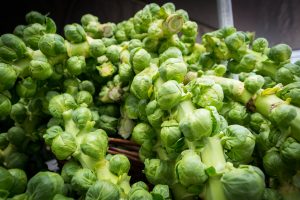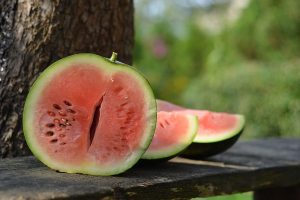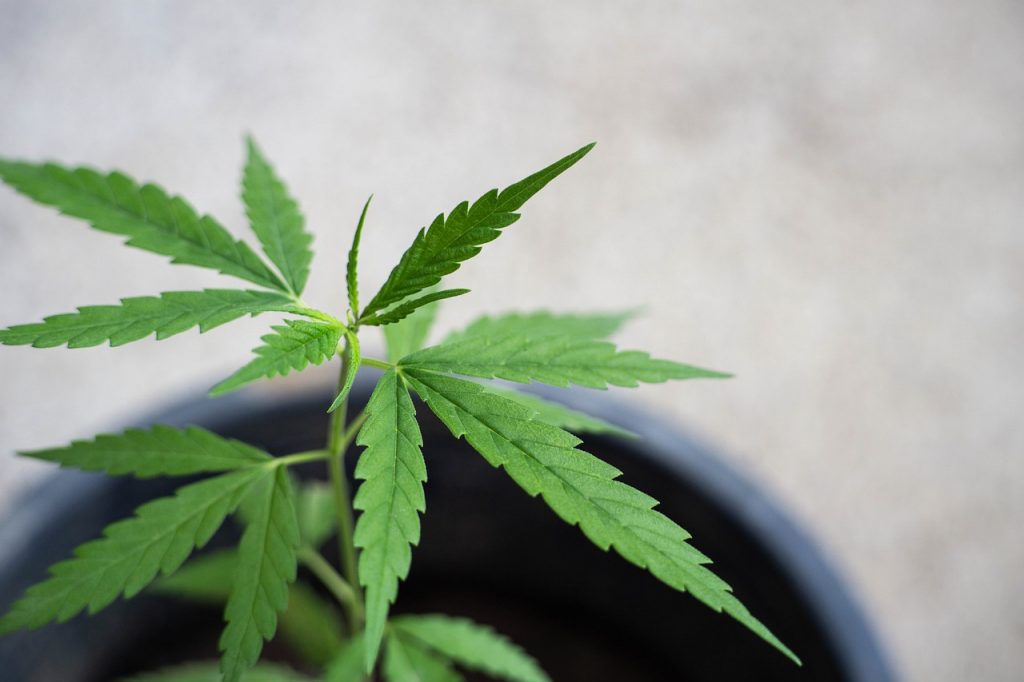
Growing marijuana is not just a hobby, but also a way to access high-quality cannabis right in the comfort of your own home. For many marijuana enthusiasts, growing their own yield is a fulfilling experience that guarantees control over the quality of the cannabis they consume. Growing marijuana is more than just planting the seeds, but it requires patience, knowledge, and the right tools. In this blog post, we will walk you through the step-by-step process of how to grow marijuana from scratch – from selecting your seeds to harvesting your yield. Whether you are a seasoned grower looking for new tips or an aspiring green thumb navigating through the world of gardening, this post covers all the basics of how to grow marijuana. So come along and let’s get started!
Setting up your indoor grow room
Setting up an indoor grow room is the foundation for successful marijuana cultivation. Before choosing high-quality seeds or understanding the plant’s life stages, it’s important to establish the right environment for your plants. This begins with choosing the right space and thoroughly cleaning it. Light proofing is also crucial for controlling the amount of light your plants receive during the different stages of growth. Installing fans for ventilation is another essential element to consider. Many growers opt for a grow tent as an effective means of creating a controlled indoor environment. By establishing a well-equipped grow room, you’ll have the foundation for a successful harvest.
Choosing high-quality cannabis seeds
Choosing high-quality cannabis seeds is a crucial step towards a fruitful harvest. It’s important to consider your needs, preferences, and abilities before selecting the strain to grow. Once you’ve chosen, find a reputable seed bank that prides themselves on their breeding skills. It’s worth investing in higher caliber seeds, as they often result in superior outcomes. Indica-dominant hybrid plants have a shorter growing season and are suitable for growers with limited space. Once you have your seeds, it’s time to germinate them and get started on the vegetative growth stage. Don’t forget to pay attention to lighting requirements and fertilizer choices throughout the process. With careful consideration and attention to detail, a bountiful harvest is within reach.
Understanding the plant’s life stages
Understanding the life stages of a cannabis plant is crucial for any grower. It allows them to make informed decisions on when to prune, train, trellis, and ultimately harvest their plants. The six distinct stages of a cannabis plant’s life cycle are germination, seedling, vegetative, flowering, ripening, and harvesting. During the germination stage, the plant is just starting its life cycle and there is no medicinal value. Once the plant becomes a seedling, however, it starts to grow rapidly and requires proper care and attention to become healthy and strong. This includes providing the right lighting, fertilizer, and adequate watering. Eventually, the plant goes through the vegetative and flowering stages, during which it produces buds that can be harvested and enjoyed. With a clear understanding of the plant’s life stages, growers can optimize their yields and create high-quality marijuana plants.
Harvesting and trimming techniques
After months of hard work, it’s finally time to reap the rewards of your cannabis plant. In this section, you’ll learn all about harvesting and trimming techniques to get the best results from your harvest. Before you get to this stage, make sure you have set up your indoor grow room with the proper lighting requirements and chosen high-quality cannabis seeds. Understanding the plant’s life stages, particularly the vegetative growth stage, will also help you achieve optimal results. When it’s time to harvest, you can choose between dry trimming or wet trimming your buds, both with their own advantages and disadvantages. Dividing the whole plant into several smaller branches can help speed up the drying process later on. Lastly, choosing the right fertilizer and cost considerations for growing marijuana at home are factors to consider when starting out. With these tips and tricks, you’ll be a pro at growing marijuana in no time.
Lighting requirements for indoor growth
Once the indoor grow room is set up and you have selected high-quality cannabis seeds, it’s time to focus on the lighting requirements for indoor growth. For optimal growth, your plants require plenty of light during the vegetative stage, typically 18 hours of light and 6 hours of darkness. During the seedling stage, LED grow lights work best and should be placed 24-36 inches above the plants. HID lamps are considered the most effective for growing cannabis, providing a better yield-to-watt ratio than fluorescent lighting. When it comes to choosing the right grow light, there are many options available, but it boils down to LED or HPS lights for the best results. To meet the lighting needs of your plants, consider using a VOLT Grow 440W VL-1 in a smaller area or the 720W FL-1 LED in a larger space. With proper lighting and care during each growth stage, your cannabis plants will flourish and provide high-quality yields for harvesting and trimming.
Choosing the right fertilizer
After setting up your indoor grow room and choosing high-quality cannabis seeds, it’s important to understand the plant’s life stages and the proper harvesting and trimming techniques. But what about the fertilizer? Marijuana plants need nitrogen, phosphorus, and potassium, or N-P-K, for healthy growth. It’s essential to choose the right fertilizer to provide the necessary nutrients. Organic fertilizers like worm castings, blood meal, fish meal, or bat guano work well for nitrogen, while bone meal or rock dust is ideal for phosphorus. For potassium, wood ash or bio-mineral fertilizers are great options. During the vegetative growth stage, a mix with a 2:1:2 NPK ratio is ideal. The first-time grower should stick to organic fertilizers and nutrients. By understanding the basic nutrient needs of cannabis plants, reading fertilizer labels, and utilizing the right fertilizer during each stage, you can achieve healthy growth and optimal yields for your home-grown marijuana.
Vegetative growth stage
After germination, cannabis plants enter the vegetative growth stage which is critical to their overall development. During this stage, the plant’s roots, branches, and leaves grow in preparation for the flowering phase. Growers need to pay close attention to the lighting requirements, as cannabis plants require a minimum of 18 hours of light in order to thrive. It’s important to keep the pH levels of the growing medium slightly acidic, around 6 to 7, to promote healthy growth. Growers should also choose the right fertilizer for the vegetative stage, as the plant needs a different balance of nutrients compared to other stages. The vegetative stage can last up to eight weeks, and some growers even choose to extend this stage to produce larger plants. Before entering the flowering stage, it’s important to trim the plant and remove any dead leaves or debris. Overall, the vegetative growth stage is a critical period in the life cycle of cannabis plants and should be navigated with care and attention to detail.
Germinating cannabis seeds
In order to successfully grow marijuana, it is crucial to properly germinate the cannabis seeds. This stage comes after choosing high-quality seeds and setting up your indoor grow room. It is important to give the seeds a temperature of 70-80 F and the presence of water and oxygen to promote germination. The paper towel germination method is a simple and effective way to get the process started. After soaking the seeds overnight in lukewarm water, they can be planted directly into the ground or containers. Be careful not to bury the seed too deep, as it may struggle to reach the surface and have a higher risk of dying. Germination can take anywhere from 3-10 days, and during this stage, expect to see the development of a tap root. Once the seeds have sprouted, it’s essential to provide 16 hours of light and 8 hours of darkness indoors to continue the plant’s growth. With proper care, the seedling will enter the vegetative growth stage and continue on its journey towards a successful harvest.
Timeframe for growing cannabis plants
Once your cannabis seeds have germinated and moved into the seedling stage, it’s important to understand the timeframe for growing your plants. Indoor marijuana growing can take anywhere from 20 to 30 weeks, or sometimes more, depending on factors like the strain chosen, available light, and ideal environmental conditions. Understanding the growth stages, including vegetative and flowering periods, is crucial in ensuring proper timing and the most robust yield. As the plant transitions from the vegetative to the flowering phase, you can expect to see the first signs of flowering in one to three weeks, and the plant will be ready for harvest in roughly 8 to 11 weeks of flowering. By having a good grasp of the timing involved in growing cannabis, you can be better prepared for planning, harvesting, and enjoying the fruits of your labor.
Cost considerations for growing marijuana at home
When considering growing marijuana at home, cost is an important consideration. Setting up an indoor grow room can cost between $325-$650 per square foot. The various supplies needed for outdoor growth, such as a water pump and hardware, can also add up. Additionally, the cost of high-quality cannabis seeds and fertilizers can impact the overall expense. It’s important to budget accordingly and research cost-effective options. However, growing marijuana at home can also save money in the long run compared to purchasing from dispensaries. By carefully considering costs and investing in quality products, home growers can successfully cultivate their own cannabis plants.

